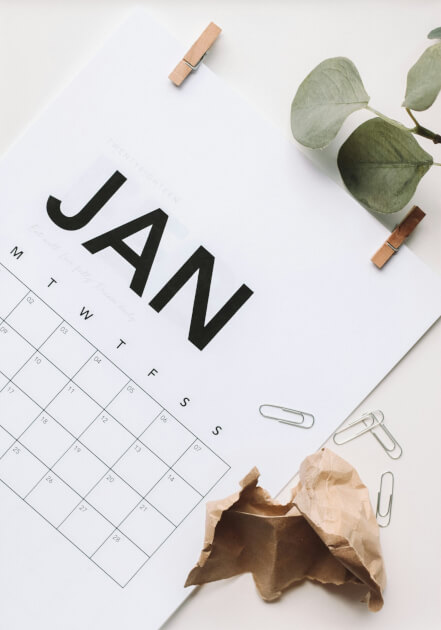Save Money With a Simple No-Spend Plan
Spending can get out of hand faster than we realize.
Whether it’s a daily coffee run or an “add to cart” moment, small habits add up.
If you’re looking for a way to save more, pay down debt, or simply get a handle on your finances, a No-Spend Challenge could be worth trying, especially now that we’re on the cusp of 2025.
It’s not about deprivation; it’s about rethinking priorities and finding creative ways to make your money work harder for you.
Here’s how to approach it without adding stress to your plate.
What Is a No-Spend Challenge?
At its core, a No-Spend Challenge is about hitting pause on non-essential spending for a set period.
Instead of buying things you don’t need, you redirect that money toward savings, debt, or something meaningful.
The timeframe is flexible—you can go for a day, a weekend, a month, or even longer.
The goal isn’t to get everything right; it’s to make progress.
Why Try a No-Spend Challenge?
This isn’t just a money-saving exercise; it’s a chance to slow down, reflect, and reset your relationship with spending.
Here are some of the benefits:
- Build Your Savings Fast: Cutting out extras, even temporarily, can make a big difference in your bank account.
- Tackle Debt: Redirecting your usual spending toward debt payments can help you pay things off faster.
- Reset Habits: It’s easy to blur the line between needs and wants.
A No-Spend Challenge helps you refocus on what really matters. - Get Creative: You’ll discover free or low-cost ways to have fun, like checking out local events or diving into hobbies you already love.
Setting Yourself Up for Success
A successful No-Spend Challenge starts with clear boundaries and realistic expectations.
1. Define What’s Essential
Here’s a quick breakdown:
Essentials:
- Housing (rent/mortgage)
- Utilities (electricity, water, internet)
- Groceries
- Transportation (gas, public transit)
- Insurance and medical expenses
Non-Essentials:
- Eating out or ordering takeout
- Entertainment like movies or concerts
- New clothes and accessories
- Hobbies that require extra purchases
- Subscriptions (consider pausing ones you’re not using)
2. Pick a Duration That Feels Doable
- One Day: A low-pressure way to start.
- Weekend: Great for testing your resolve while planning free activities.
- Week: This requires meal prep and some planning but is still manageable.
- Month: A bigger commitment that can yield major savings.
- Year: For a lifestyle overhaul—but this is only for those ready for a long-term commitment.
3. Set a Goal
Why are you doing this?
Whether it’s saving for a vacation, tackling debt, or building an emergency fund, having a clear purpose makes it easier to stay motivated.
4. Plan for the Unexpected
Life happens.
Be ready for emergencies or pre-planned events, and decide up front what counts as an exception.
This will help you avoid impulse decisions.
Tips to Stay on Track
- Inventory First: Take stock of what you already have, from pantry items to personal care products.
Use these up before buying more. - Meal Plan: Plan meals based on what’s in your fridge and pantry to reduce grocery spending.
- Seek Free Fun: Think picnics, hikes, or free admission days at local attractions.
- Avoid Triggers: Unsubscribe from marketing emails and steer clear of “just browsing” trips.
- Get Accountability: Share your challenge with a friend or family member who can cheer you on (or join in!).
- Track Progress: Keep a journal or spreadsheet to see how much you’ve saved.
It’s motivating to watch the numbers grow.
Potential Roadblocks (and How to Handle Them)
- Social Pressure: It’s hard to say no to invites that cost money.
Be up front about your challenge and suggest free alternatives like a potluck or a coffee chat at home. - Unexpected Expenses: Keep a small buffer in your budget for true necessities, and don’t beat yourself up if something unavoidable comes up.
- Temptation to Spend: Revisit your goal, focus on your progress, and distract yourself with something productive or fun.
What to Do with Your Savings
Once your challenge is over, decide where your extra funds will have the most impact:
- Emergency Fund: Build a financial safety net for unexpected expenses.
- Debt Payments: Pay down balances faster to save on interest.
- Invest: Let your money grow over time by putting it into investments or a high-yield savings account.
- Celebrate Smartly: Reward yourself with a small, meaningful treat—a book you’ve been eyeing or a dinner out.
Making It Work for You
A No-Spend Challenge isn’t about rigid rules—it’s about making conscious choices.
Even small efforts to cut back can shift your habits and mindset, so every step toward mindful spending matters.
Start small, stay flexible, and remember—it’s not just about saving money but creating a healthier relationship with your finances.
You’ve got this!
The No-Spend Challenge is what you make it—practical, empowering, and entirely tailored to your goals. Just keep it simple, stay focused, and don’t forget to celebrate your wins, no matter how small.


